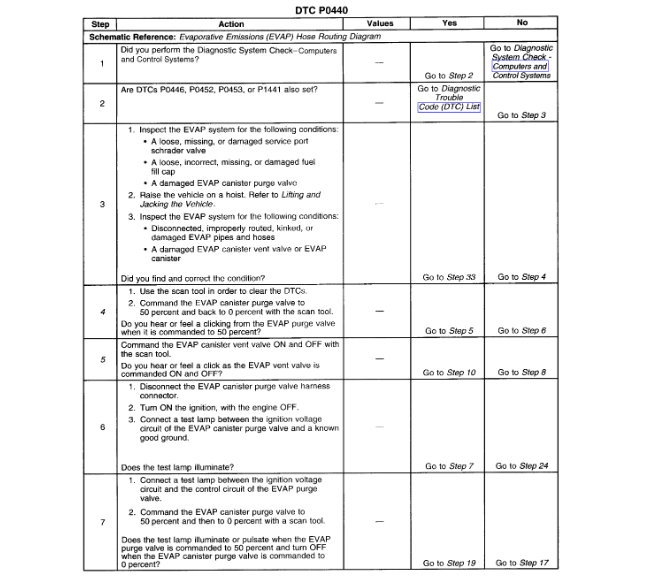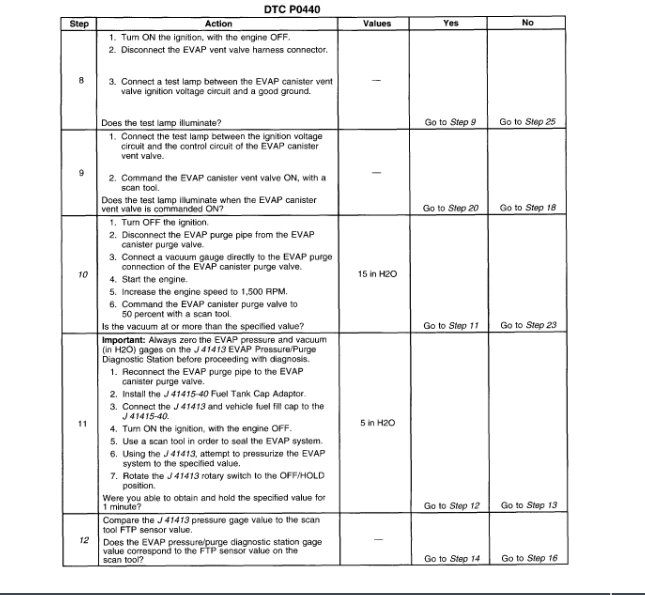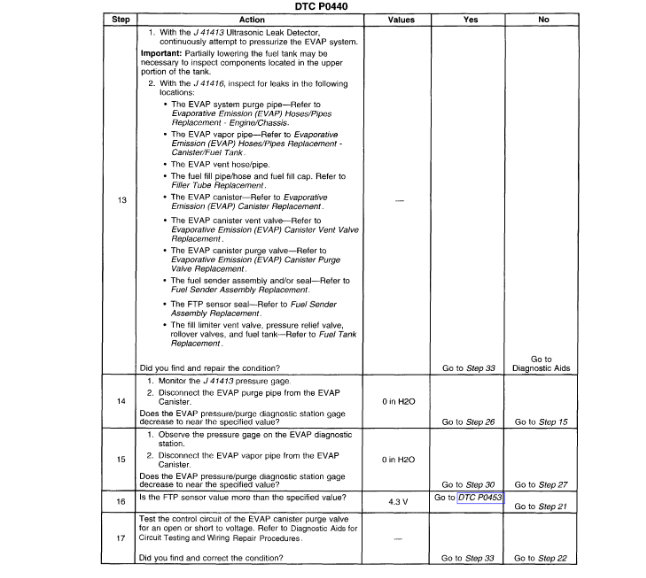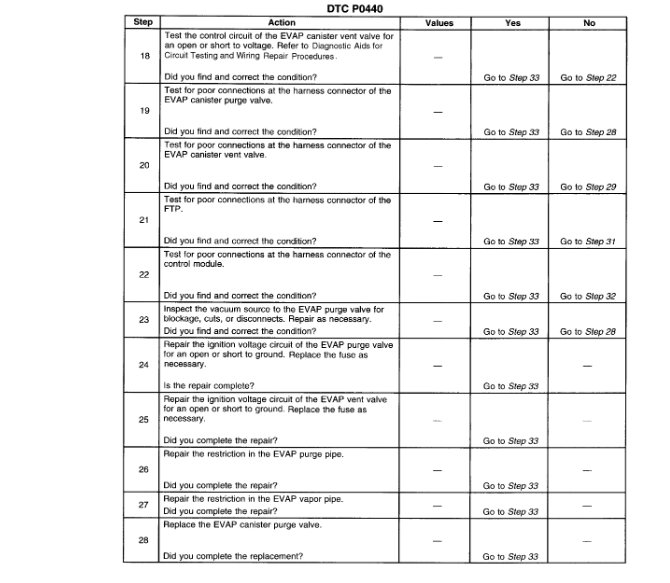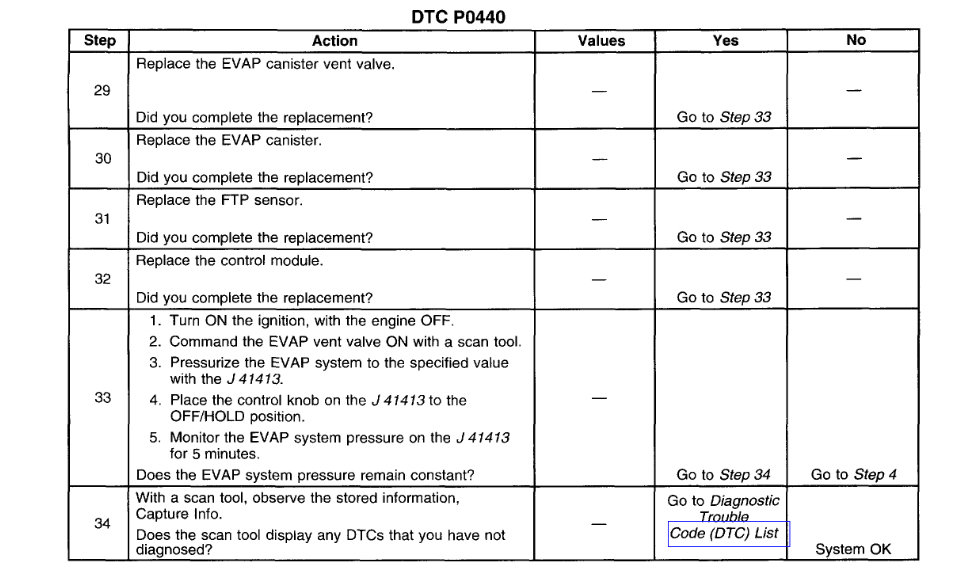Good morning,
Yes, they should get it right the first time if they are doing a real diagnostic. Sounds like they are throwing parts at it and guessing.
They should not charge you for a diagnostic after the first one you paid for. That is a comeback each time and they are the ones who did incorrect repairs. You should not even be held financially responsible for a repair that did not correct your issue.
I would contact the service manager and go in with your receipts and express your concerns and you want to be returned money for repairs that did not fix your issue.
Roy
Description
SYSTEM DESCRIPTION
The control module tests the evaporative emission (EVAP) system for a large leak. The control module monitors the fuel tank pressure (FTP) sensor signal to determine the EVAP system vacuum level. When the conditions for running are met, the control module commands the EVAP canister purge valve OPEN and the EVAP vent valve CLOSED. This allows engine vacuum to enter the EVAP system. At a calibrated time, or vacuum level, the control module commands the EVAP canister purge valve closed, sealing the system, and monitors the FTP sensor input in order to determine the EVAP system vacuum level. If the system is unable to achieve the calibrated vacuum level, or the vacuum level decreases too rapidly, this DTC sets.
ImageOpen In New TabZoom/Print
The table illustrates the relationship between the ON and OFF states, and the OPEN or CLOSED states of the EVAP canister purge and vent valves.
CONDITIONS FOR RUNNING THE DTC
DTCs P0107, P0108, P0112, P0113, P0116, P0117, P0118, P0122, P0123, P0125, P0452, or P0453 are not set.
The ignition voltage is between 10-18 volts.
The barometric pressure (BARO) is more than 75 kPa.
The fuel level is between 15-85 percent.
The engine coolant temperature (ECT) is between 4-30°C (39-86°F).
The intake air temperature (IAT) is between 4-30°C (39-86°F).
The start-up ECT and IAT are within 9°C (16°F) of each other.
The vehicle speed sensor (VSS) is less than 121 km/h (75 mph).
CONDITIONS FOR SETTING THE DTC
The EVAP system is not able to achieve or maintain vacuum during the diagnostic test.
ACTION TAKEN WHEN THE DTC SETS
The control module illuminates the malfunction indicator lamp (MIL) on the second consecutive ignition cycle that the diagnostic runs and fails.
The control module records the operating conditions at the time the diagnostic fails. The first time the diagnostic fails, the control module stores this information in the Failure Records. If the diagnostic reports a failure on the second consecutive ignition cycle, the control module records the operating conditions at the time of the failure. The control module writes the operating conditions to the Freeze Frame and updates the Failure Records.
CONDITIONS FOR CLEARING THE MIL/DTC
The control module will turn the malfunction indicator lamp (MIL) OFF during the first consecutive trip in which the diagnostic has been run and passed.
A last test failed (current DTC) clears when the control module turns OFF the MIL.
The history DTC will clear after the control module runs and passes 40 consecutive warm up cycles with no failure.
The DTC can be cleared by using a scan tool.
DIAGNOSTIC AIDS
Reviewing the Failure Records vehicle mileage since the diagnostic test last failed may help determine how often the condition that caused the DTC to be set occurs. This may assist in diagnosing the condition.
Use the J 41413 EVAP Pressure/Purge Diagnostic Station in order to pressurize the EVAP system to aid in locating intermittent leaks. Move all EVAP components while testing with the J 41416 Ultrasonic Leak Detector.
A temporary blockage in the EVAP canister purge valve, purge pipe, or EVAP canister could cause an intermittent condition. To repair a blockage in the EVAP system refer to Evaporative Emission (EVAP) System Cleaning.
TEST DESCRIPTION
Steps 1-7
imageOpen In New TabZoom/Print
Steps 8-12
imageOpen In New TabZoom/Print
Steps 13-17
imageOpen In New TabZoom/Print
Steps 18-28
imageOpen In New TabZoom/Print
Steps 29-34
imageOpen In New TabZoom/Print
The numbers below refer to the step numbers on the diagnostic table.
4. This test verifies that the EVAP purge valve is electrically functional.
5. This test verifies that the EVAP vent valve is electrically functional.
10. This test verifies that engine vacuum is present when the EVAP purge valve is open.
12. This test verifies that the FTP sensor is accurate. An EVAP FTP sensor that does not correctly respond to vacuum, or pressure may cause this DTC to set
Images (Click to make bigger)
Friday, January 11th, 2019 AT 7:28 AM
